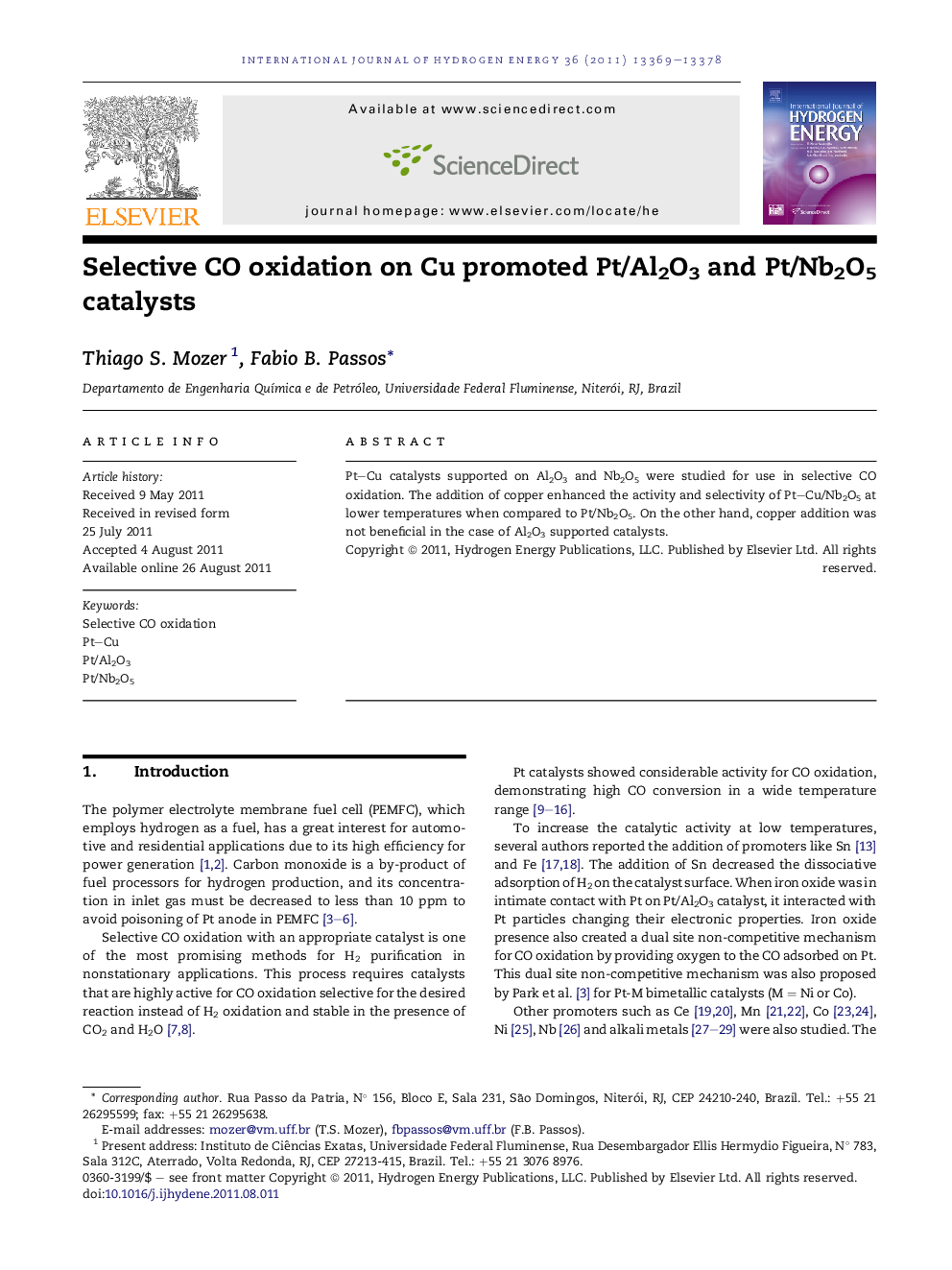| Article ID | Journal | Published Year | Pages | File Type |
|---|---|---|---|---|
| 1278678 | International Journal of Hydrogen Energy | 2011 | 10 Pages |
Pt–Cu catalysts supported on Al2O3 and Nb2O5 were studied for use in selective CO oxidation. The addition of copper enhanced the activity and selectivity of Pt–Cu/Nb2O5 at lower temperatures when compared to Pt/Nb2O5. On the other hand, copper addition was not beneficial in the case of Al2O3 supported catalysts.
Graphical abstractThe copper addition increased the maximum CO conversion from 25% at 200 °C to 65% at 100 °C for Nb2O5 supported catalyst and also enhanced the selectivity. The same behavior was not observed in the case of Al2O3 supported catalyst, the addition of 1%Cu on 1%Pt/Al2O3 catalyst decreased substantially the maximum observed CO conversion. The metal–metal interaction between Pt and Cu maintain copper in the metallic state and resulted in changes in redox properties of the catalysts. Bimetallic and geometric effects may be involved, changing catalytic properties of the bimetallic samplesFigure optionsDownload full-size imageDownload as PowerPoint slideHighlights► The effect of Cu addition on Pt/Al2O3 and Pt/Nb2O5 was studied for the selective CO oxidation. ► Characterization and reaction data evidenced that the interaction between Pt and Cu was dependent on the support. ► The lower CO conversion for Pt–Cu/Al2O3 was ascribed to blocking of Pt active sites by the presence of Cu. ► Pt–Cu/Nb2O5 catalyst showed higher CO conversion at lower temperatures due to a bimetallic interaction between Pt and Cu. ► The SMSI effect between Pt and Nb2O5 also seemed to enhance the catalytic activity at lower temperatures.
